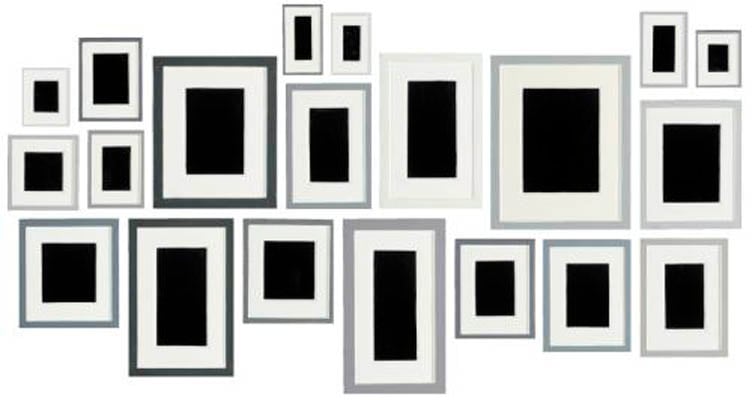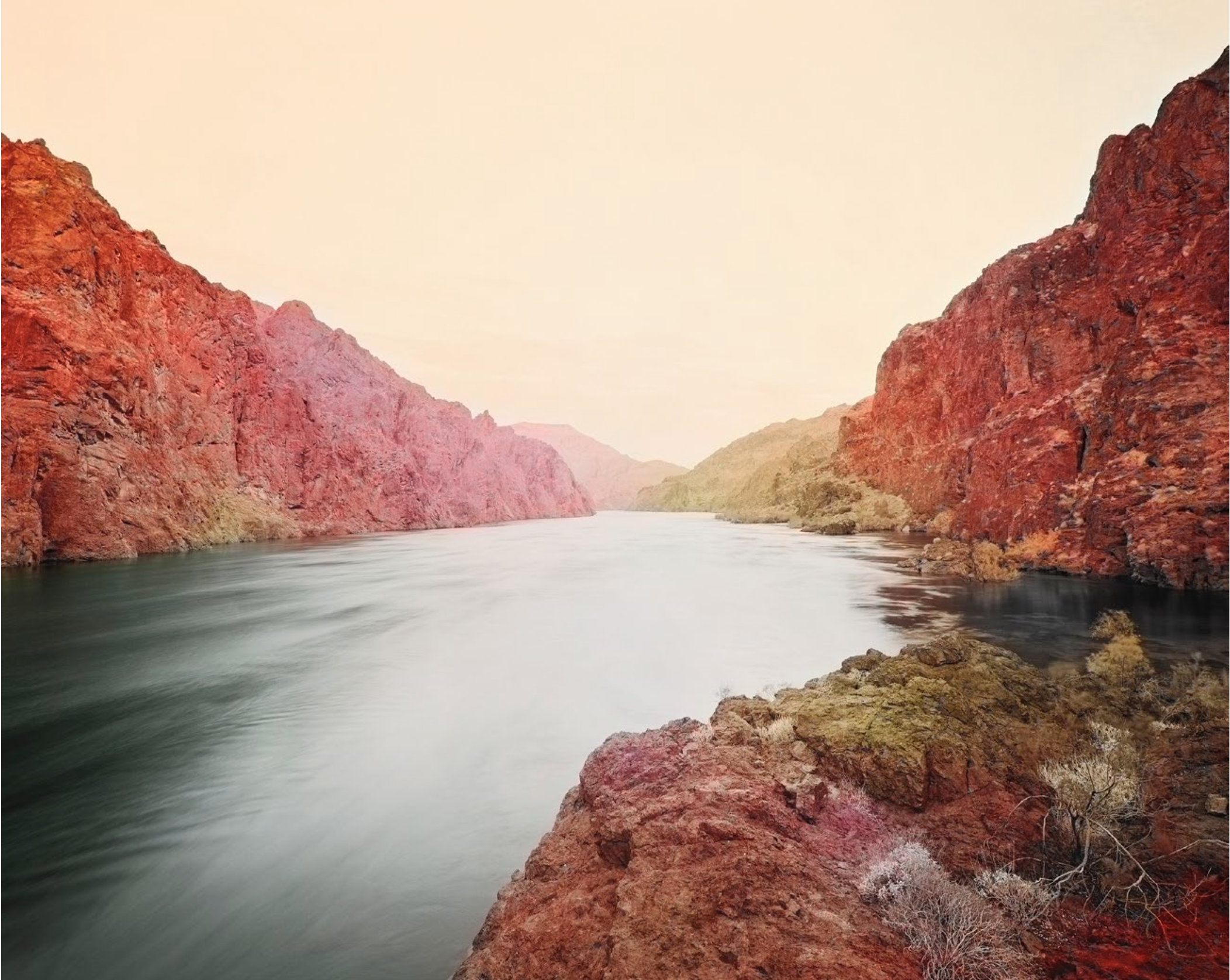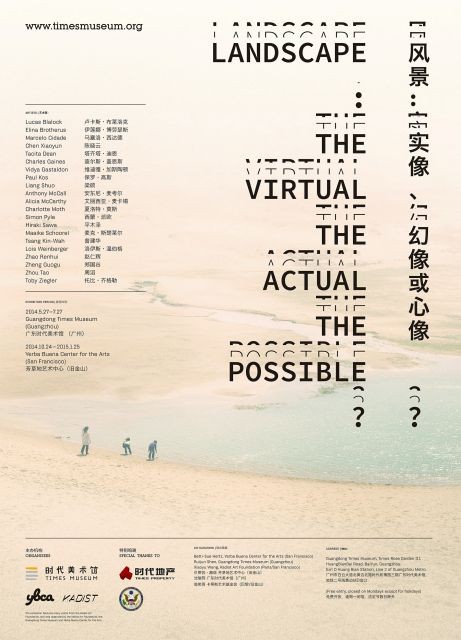The Black Canyon Deep Semantic Image Segments
2020 - Photography (Photography)
101.6 x 127 cm
Trevor Paglen
The Black Canyon Deep Semantic Image Segments by Trevor Paglen merges traditional American landscape photography (sometimes referred as ‘frontier photography’ for sites located in the American West) with artificial intelligence and other technological advances such as computer vision. In order to take this photograph, Paglen traveled to the Black Canyon, south of the Hoover Dam. Only accessible by water, Paglen piloted a boat up the Colorado river into the canyon. Paglen was drawn to the canyon because of the significant role it played in 19th century ‘frontier’ photography. Today, this area is much less photographed than similarly popular locations because it is only accessible by boat. The artist admits that the trip to photograph this historic site wasn’t altogether enjoyable, as he went in the dead of summer while the temperature was 125 degrees fahrenheit. During his stay, he camped along the riverside and barely slept due to the extreme heat. This experience gave Paglen a greater appreciation for the grueling conditions that frontier photographers worked under during the 19th century. The intensely saturated color in the image is due to Deep Saliency, which Paglen explains is produced by “using computer vision to analyze photographs using Artificial Intelligence. In ‘classical’ computer vision, one develops algorithms that look for lines, circles, ‘interesting features,’ and complex shapes and tries to infer something about the images from these ensembles […] one ‘trains’ the neural network on thousands or millions of images, and the network develops its own ‘tools’ to analyze those images. Deep Saliency is a technique to differentiate between sections, areas, or different types of objects in an image as interpreted by a neural network using criteria it has created for itself.” (Altman Siegel, Trevor Paglen , 29).
Trevor Paglen’s work combines the knowledge-base of artist, geographer and activist. He is primarily concerned with “learning how to see the historical moment we live in and developing the means to imagine alternative futures.” Through unique processes like long distance photography, and conducting research like an investigative journalist, Paglen has presented artworks that live at the very edge of the known and the possible, in the zone of facts-stranger-than-fiction. He’s contributed research and cinematography to the Academy Award-winning film Citizenfour , and created a radioactive public sculpture for the exclusion zone in Fukushima, Japan. He is the author of five books and numerous articles on subjects ranging from experimental geography to military symbology, from the CIA’s extraordinary rendition program to machine-made images.
Colors:
Related works of genres: » artists from the san francisco bay area, » american conceptual artists
» see more

© » KADIST
Amy Balkin
2012Data mining is a computer software process that can involve the neutral or benign analyzing of internet data for patterns, however, it can also imply the more sinister activities of surveillance or subject-based information gathering...

© » KADIST
Ari Marcopoulos
1998A photograph of a tin box full of marijuana simply titled Green Box, speaks to the constantly changing status of the substance–once taboo or illicit, now a symbol of a growing industry in Northern California...

© » KADIST
Lynn Hershman Leeson
2007Lynn Hershman Leeson’s genre-bending documentary Strange Culture tells the story of how one man’s personal tragedy turns into persecution by a paranoid, conservative, and overzealous government...

© » KADIST
Allan McCollum
1982In the work titled The Glossies (1980), an affinity for photography manifested itself before McCollum actually began to use photography as a medium...
Other related works, blended automatically
» see more

© » KADIST
Trevor Paglen
2017Trevor Paglen’s ongoing research focuses on artificial intelligence and machine vision, i.e...
Related works sharing similar palette
» see more

© » ARTS EQUATOR
Weekly Southeast Asian Radar: Malaysia reopens theatres; playwright Alfian Sa'at dragged into politics | ArtsEquator Thinking and Talking about Arts and Culture in Southeast Asia ArtsEquator Radar DPAC June 25, 2020 ArtsEquator’s Southeast Asia Radar features articles and posts about arts and culture in Southeast Asia, drawn from local and regional websites and publications – aggregated content from outside sources, so we are exposed to a multitude of voices in the region...
Other works by: » Trevor Paglen
» see more

© » KADIST
Trevor Paglen
2017Trevor Paglen’s ongoing research focuses on artificial intelligence and machine vision, i.e...

© » KADIST
Trevor Paglen
2020Half Dome Hough Transform by Trevor Paglen merges traditional American landscape photography (sometimes referred as ‘frontier photography’ for sites located in the American West) with artificial intelligence and other technological advances such as computer vision...
Related artist(s) to: Trevor Paglen » Anton Vidokle, » Raqs Media Collective, » Amy Franceschini, » Ann Veronica Janssens, » Carlos Motta, » Eyal Weizman, » Hasan Elahi, » Kota Ezawa, » Laura Poitras, » Taryn Simon
» see more

© » KADIST
Anton Vidokle
2020Shot in Oliveto Lucano, a village in the south of Italy, AUTOTROFIA (meaning self-eating) by artist Anton Vidokle is a cinéma vérité style film that slides fictive characters into real situations, and vice-versa, to draw a prolonged meditation on the cycle of life, seasonal renewal, and ecological awareness...

© » KADIST
Kota Ezawa
2017The Crime of Art is an animation by Kota Ezawa that appropriates scenes from various popular Hollywood films featuring the theft of artworks: a Monet painting in The Thomas Crown Affair (1999), a Rembrandt in Entrapment (1999), a Cellini in How to Steal a Million (1966), and an emerald encrusted dagger in Topkapi (1964)...

© » KADIST
Carlos Motta
2014Searching for We’wha is composed of five photographic triptychs combining photographs from the American West (New Mexico and Arizona) with excerpts from American Indian poetry in an attempt to reconstruct imaginary aspects of the life of We’Wha, a famous member of the Zuni tribe, who was born male but who lived a feminine gender expression...

© » KADIST
Kota Ezawa
2002The Simpson Verdict is a three-minute animation by Kota Ezawa that portrays the reading of the verdict during the OJ Simpson trial, known as the “most publicized” criminal trial in history...
Related works found in the same semantic group
» see more

© » KADIST
Olive Martin & Patrick Bernier: New Kahnawaké “From my house I take the Proxad, Nantes and Brittany, to Paris where I get on the Teleglobe which takes me to Montreal via New York, and then finally take the Mohawk which drops me off at the 7 Sultans Casino” (extract from the commentary based on an internet connection route plotted by Traceroute*) The Mohawk, the emblematic Frontier River named during the period of American colonization...







